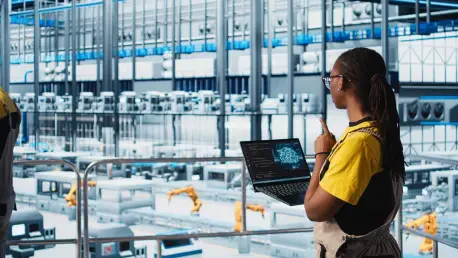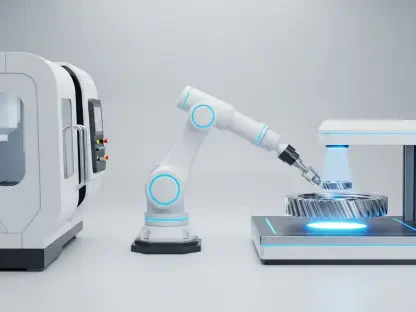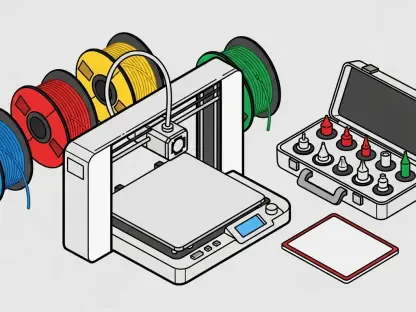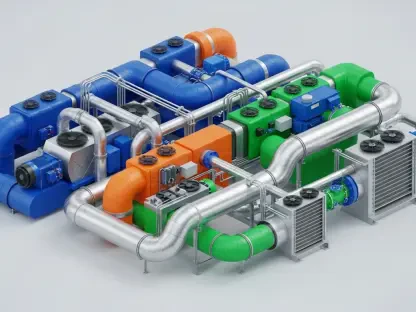They are materials of the future: When manufacturers talk about innovation, the focus usually falls on automation, AI, and robotics. But there’s another revolution happening—quieter yet equally transformative. It’s not digital at all, but in the very materials companies build with.
In today’s climate of sustainability goals and extreme performance demands, the metals and plastics that dominated the last century are straining to keep up. Products from airplanes to automobiles are weighed down (literally) by traditional materials. And when weight and rigidity become liabilities, efficiency and innovation suffer.
This article explores how advanced composite materials are quietly upending traditional production across the globe, and what forward-thinking manufacturers can do to harness this material revolution.
The Weight of Legacy Materials
For over a hundred years, industrial growth has been forged in steel and aluminum. These legacy materials have proven reliable and versatile—but they’re also heavy, prone to corrosion, and reaching the limits of their performance.
Modern manufacturing now stands at a crossroads: lightweight, durable, and sustainable solutions are needed, yet conventional metals often can’t deliver. Consider the automotive industry’s push for fuel efficiency. Engineers have squeezed what they can from steel and aluminum, but it’s not enough to meet today’s targets for lighter, greener vehicles. Continuous fiber composites stepped in to provide the answer, enabling weight reductions of up to 60% in certain auto components compared to steel, without sacrificing strength.
The story repeats across sectors. The manufacturing world is realizing that sticking solely to legacy metals means dragging around legacy problems. And that weight—both literal and figurative—is creating cracks in the foundation of progress. So what happens if you keep relying on the same old material playbook?
When Materials Become Roadblocks
When the stuff your products are made of holds you back, the risks aren’t as dramatic as a sudden failure—they’re quiet eroders of your competitive edge. Heavy materials mean heavier products: airplanes that burn more fuel, cars that get shorter range, and machinery that consumes more energy to move. Over time, those inefficiencies pile up in your balance sheets and your carbon footprint. For instance, in aviation, the drive to cut weight is constant because every kilogram trimmed saves fuel. Composites have answered this call; they’re now crucial in aircraft wings and fuselages, reducing weight and thus cutting fuel consumption and even maintenance costs. In fact, Boeing’s 787 Dreamliner turned heads by using advanced carbon-fiber composites for 50% of its structure by weight—a radical shift that helped it achieve double-digit gains in fuel efficiency over previous generation jets.
Heavier materials also cap what’s possible. Wind energy engineers dream of larger turbines that generate more power, but there’s a catch: longer blades would collapse under their own weight if made purely of traditional fiberglass or metal. Here again, composites remove the roadblock. Rotor blades over 80 meters long are already spinning today, and 100-meter blades are on the horizon. This leap is only feasible because carbon fiber-reinforced composites keep those giant blades light yet incredibly stiff, so they can withstand extreme winds without tearing themselves apart. Without composites, that kind of progress simply stalls.
Every industry has a version of this story. Automakers know that to deliver the range and performance buyers expect, they must shed weight. That’s why electric vehicles manufacturers are redesigning battery enclosures, chassis, and body panels with carbon fiber and other composites; every kilogram saved means extra miles on the road. If material limits are quietly capping your products’ potential, the solution isn’t tweaking old materials at the margins but rethinking what they’re made of in the first place.
Why Steel and Aluminum Aren’t Enough
A logical response to heavy steel is to turn to lighter metals like aluminum or new high-strength alloys. And indeed, these have helped—up to a point. Even the best metals carry fundamental limitations.
Aluminum, often hailed as a lightweight champion, still weighs 20–30% more than an equivalent carbon-fiber part; for steel, the difference can be nearly 50%. That gap isn’t closing with minor improvements—it’s baked into the physics of the materials. To get the strength of steel, you need a lot of aluminum (and even more if you want the stiffness); to get the lightness of carbon fiber, no metal on the periodic table will suffice.
In short, traditional materials can’t replicate the leaps that composites provide.
It’s not just about weight, either. Metals fatigue with repeated stress, they rust, and they constrain design possibilities. How many intricate or optimized designs never make it off the whiteboard because metal couldn’t handle the shape or the stress concentrations?
This is why simply swapping one metal for a slightly better metal is often a dead-end for the next generation of products. The performance demands of modern industry—be it a jetliner that needs to be lighter and longer-range, or a production robot arm that should be faster without sacrificing precision—are outpacing what tweaks to legacy materials can deliver. To break through the plateau, manufacturers are increasingly looking to a different class of materials altogether. In other words, if steel and aluminum can’t get you there, you need to change the game—and that game changer is advanced composites.
Advanced Composites: A New Strategy for Manufacturing
If traditional materials are a roadblock, advanced composites are the detour that leads to a faster highway. Carbon fiber reinforced polymers, glass fiber composites, aramid fibers, ceramic matrix composites—these are materials that represent a new strategy for manufacturing.
Companies adopting composites are reimagining products to fully exploit what composites can do. It’s a holistic approach, often requiring updates to design philosophy, supply chains, and production methods. But those who get it right are leaping ahead of those who don’t.
What makes composites strategic is how they integrate into the whole manufacturing ecosystem. Take the production floor: making composite parts has historically been labor-and skill-intensive, involving careful layups and long curing times. That’s changing fast. Advanced manufacturing techniques like automated fiber placement robots, resin transfer molding, and even 3D printing with composite materials have dramatically improved the scalability and cost-efficiency of composite production.
In practical terms, this means composites are becoming accessible for high-volume industries. A decade ago, you might have written off carbon fiber as too expensive or finicky for your factory; today, automated systems and improved processes are paving the way for composites in everything from wind turbine hubs to mass-market car chassis.
There’s also a digital side to this material revolution. Cutting-edge design software and AI-driven simulation tools are making it easier to engineer parts for composite fabrication (and to do it right the first time).
It’s no coincidence that the global advanced composites market has swelled to over $30 billion in value and continues to grow each year. More sectors are coming online—from consumer electronics stuffing composite materials into ultra-thin devices, to construction firms using composite rebar and panels to extend building lifespans. The momentum is clear.
A Blueprint for Embracing Composites
Adopting advanced composites takes planning and a deliberate approach. Here’s a practical blueprint to start integrating them into your products and processes:
Map Your Material Challenges. Begin by identifying where traditional materials are holding back your products. Which components are heaviest or most prone to failure and high maintenance? Those pain points highlight the best opportunities for a composite solution.
Start with Low-Hanging Wins. You don’t need to rebuild your entire product line in carbon fiber on day one. Look for high-impact parts that can be swapped or redesigned in composite with relative ease. It might be a machine casing, a vehicle panel, or a structural brace. Early success stories create momentum and buy-in for broader adoption.
Invest in Skills and Partnerships. Working with composites requires a different skill set than metals. You may need to train your engineering team in composite design principles (fiber orientations, layering, curing processes) and even hire specialists or consultants. Alternatively, form partnerships with suppliers who are experts in composite fabrication.
Upgrade Your Toolset and Processes. Bringing composites into production might demand new equipment and software. This could mean acquiring an autoclave (for curing high-performance parts) or using advanced simulation software that can predict how a composite structure will behave under load. The key here is ensuring you have access to the right tools so composite parts can be made efficiently and reliably.
Embed Composites Early in Design. Perhaps the biggest mindset shift is to consider composite materials from the very start of product design. Composites shine most when designs are tailored to their strengths. Encourage your design and R&D teams to collaborate closely with materials engineers. And once you move to prototyping, be prepared to iterate; each cycle will teach your team how to better leverage the unique properties of these materials.
By following this blueprint, you’ll begin to weave advanced composites into your manufacturing operations.
Your Production Line Isn’t Ready—Yet
It’s tempting to look at a busy factory, full order books, and products shipping on time and conclude that your materials and processes are “just fine.” After all, if it’s not broken, why fix it? But this complacency can be misleading. Ask yourself (and your team): How often do design ideas get watered down or rejected because the material couldn’t meet the specs? How many warranty claims or maintenance issues trace back to things like corrosion, metal fatigue, or other material-related failures?
It’s easy for these issues to hide in plain sight. In a sense, you might be efficiently producing products that are as good as they can be given the old constraints, but not as great as they could be with new technology.
Yes, advanced composites often come with a higher upfront cost and require new know-how—it’s true that carbon fiber is still pricier per kilogram than steel, and not every factory can start curing aerospace-grade parts overnight. But those challenges can be overcome with the right strategy and scale. And importantly, costs are falling as demand rises and techniques improve. The hard truth is that clinging solely to legacy materials is starting to look like a liability.
The Opportunity on the Horizon
Lighter, stronger, more resilient—advanced composites promise a future where manufacturers can do more with less. For those in the business of making things, that’s a game-changing proposition.
A world where passenger electric vehicles deliver longer range and quicker acceleration because their frames shed hundreds of pounds. Where airplanes carry more people using less fuel. All of these are real, tangible wins that come from embracing composites.
There’s a reason virtually every major manufacturing sector is investing in these materials. The trend lines all point upward.
Lightweight, not legacy, is the future of manufacturing. The materials have evolved, and so must the manufacturers. The opportunity is on the table; now it’s yours to grab.









